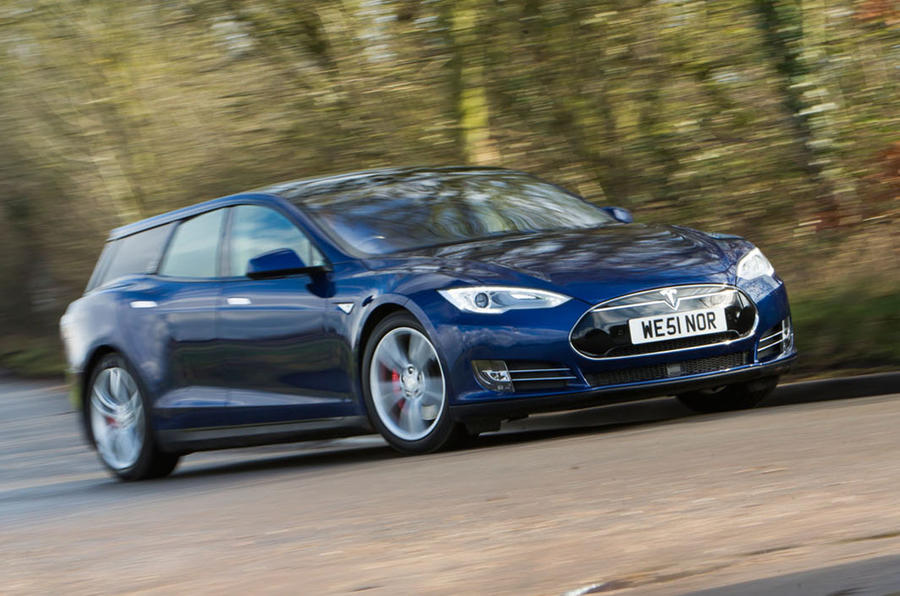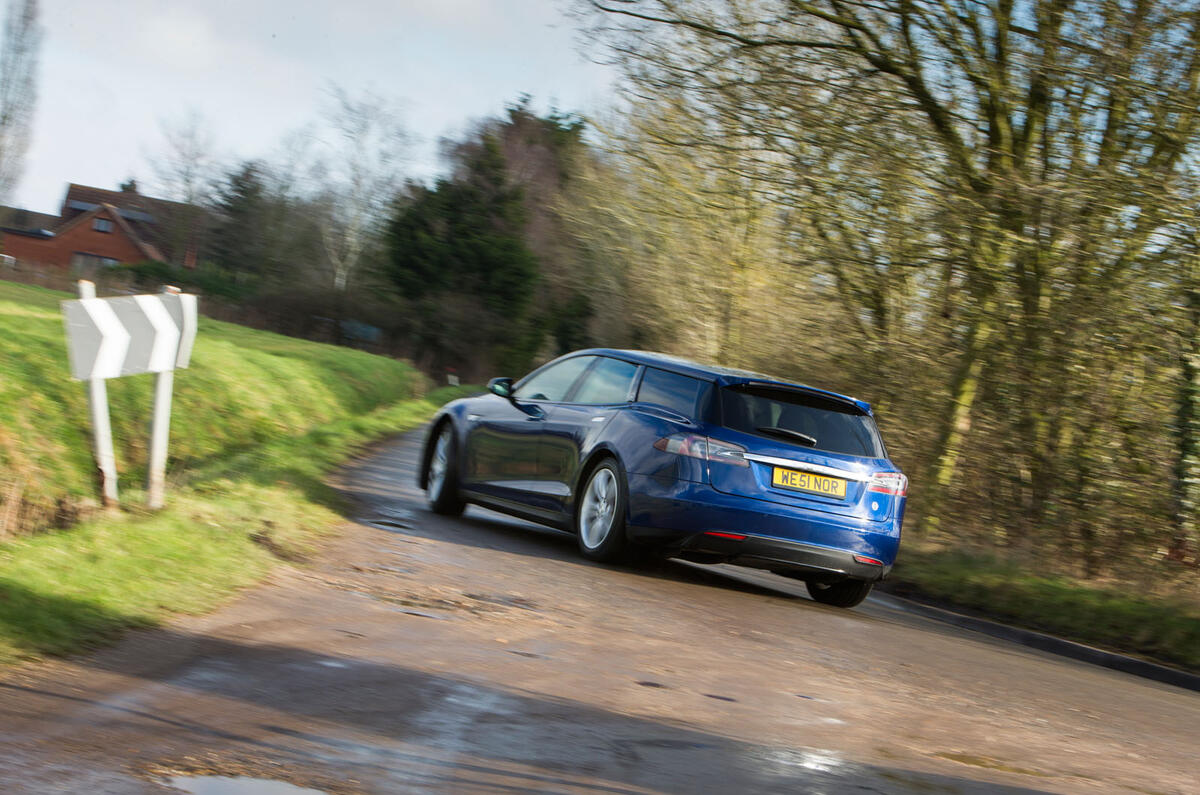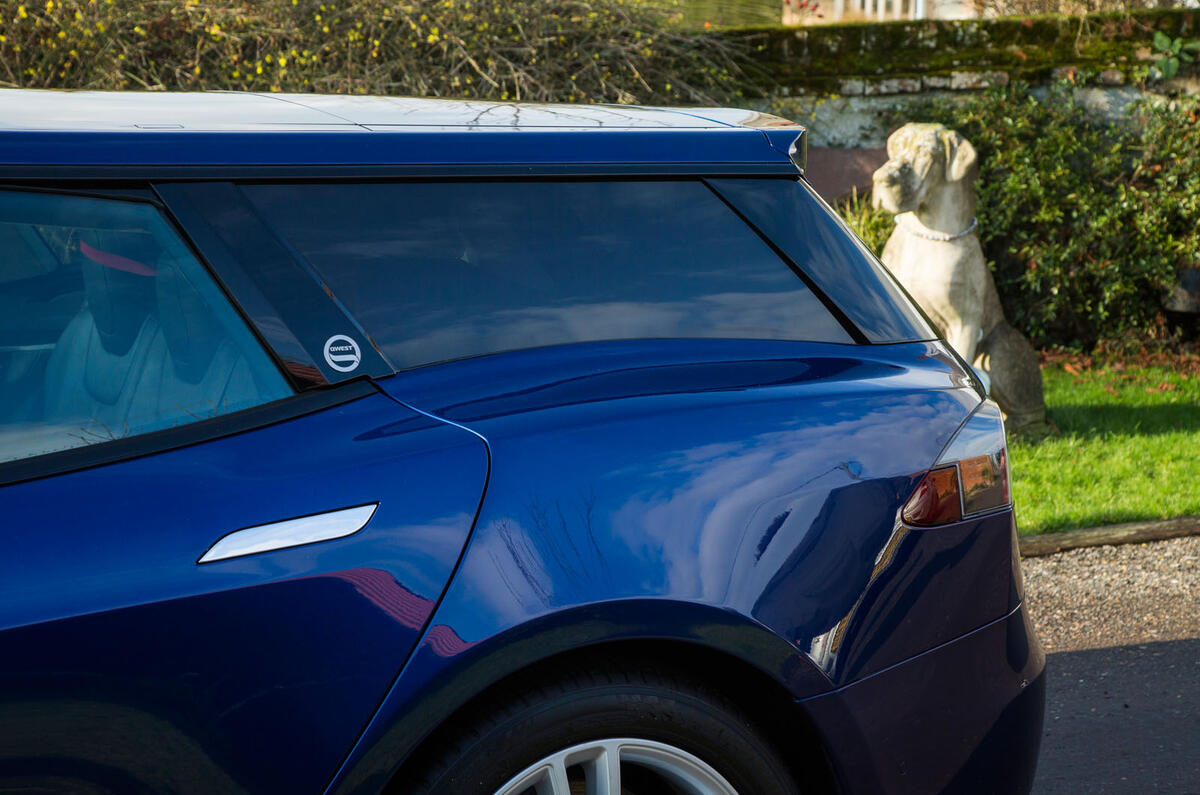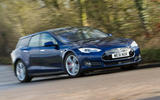They say all great ideas start in a pub. Science has yet to explain why - probably because no one has produced a coherent post-session report - but evidence suggests a top lip dampened by the froth of ale really motivates a creative mind.
For some, these great pub ideas will best lost in the mists of a hangover but, for others, something truly impressive can follow. Take the Tesla Model S Shooting Brake you see on these pages, which was first coined at The Bird in Hand near Hethel in Norfolk.
“Three of us were having a catch-up chat and a pint over lunch when we thought it up,” says Dorian Hindmarsh, managing director of the coachbuilding company Qwest that produced the car. “Phil, who had just bought a Tesla Model S P90D, said he had nowhere to carry his dogs, so Jim said why don’t you make it an estate car. Roll on 18 months and there’s one sitting outside.”

Phil Hayton, director of Qwest and the man who bravely allowed the part-dismantling of his Model S to make the world’s first battery-electric shooting brake, liked the idea of an estate because it would provide more room for Ted, his six-year-old labradoodle. Jim Router, a technical genius with 40 years of experience, joined the venture as engineering director with such confidence that he said it’d be “a doddle” to convert the saloon.
Of course, it was inevitably more complicated than that, as Router explains upon our visit to Qwest’s Dereham base for a look at the finished car. “The challenge was trying to design the changes so they are repeatable,” he says, standing beside the carbonfibre tub of a Jaguar XJR-8 and a 1:8 scale McLaren F1 model, mementos of former projects he has played a key part in. “It’s no good just cutting into it; we had to leave all major structural parts there so the crumple zones are unaffected.” This is where Router’s involvement paid dividends.

























Join the debate
Add your comment
Are they for real ?! Theres
Are they for real ?! Theres no nothing wrong with the idea of a Tesla estate, but this conversion - despite its cost - looks like someone did it in their garage, its comical. The bit of roof theyve added is just a flat panel so it looks like an add on and doesnt match the curvature of the rest of the roof, plus it totally jars with the curved window line above the wheelarch. And the rear door glass is the same as the saloon so it curves downards at its uppermost edge, but the door frame has been modified and is now straight ! And then theres those double C pillars ! Theyre having a laugh. Its like a 12 year old designed it on the back of an excercise book. No one in their right mind would pay 70 grand ON TOP of the base vehicle for this. The anonymous styling is the Model S' worst feature, but this thing actually manages to look even worse. Lets hope the other lot working on a Model S estate do better.
Surprised at the level of negativity
Sure there are a couple of details that jar a touch, such as the top of the rear passenger door windows and the C pillar/door junction but overall it's an impressively well designed conversion. I can appreciate that some might not like the flat roof and there are hints of other estates in the design but to say it's ugly seems a stretch. As others have said though, really Tesla should be making an estate.
Ugly as hell, and with those
Ugly as hell, and with those original pillars in the back, I really cant see the point.